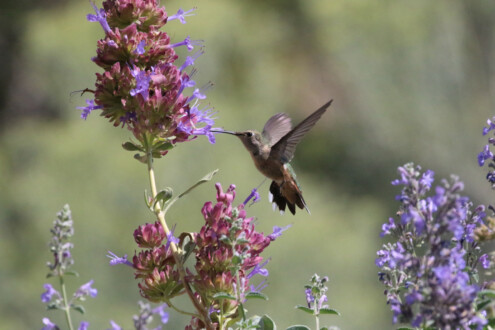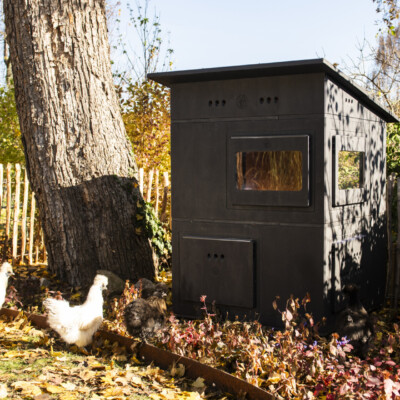Many bird species are becoming rarer and rarer, due to, among other things, a lack of nesting/secluded spots and a steady reduction in the natural food supply. Some species are even threatened with extinction. But what does that mean to us?
Birds are not only amazing to watch, they are also of great importance to our nature & the environment:
- Ecosystems
> Interconnecting through the dispersal of seeds & fruits
- Flower pollination
> Birds make an essential contribution to this
- Pests
> Birds are natural enemies
- Bioindicators
> Bird population as a barometer for the state of our environment

Ecosystems
…are connected by the high mobility of birds.
Through their ability to travel long distances in the air, birds provide an important role in the interconnectedness of ecosystems. This happens primarily through two processes: on the one hand, seeds or fruits are deliberately buried in a wide variety of places in preparation for winter, and on the other hand, seeds which they have eaten are often excreted in places far from where they were found.
An impressive example of this is the pine jay. In autumn, it collects the seeds of hazelnut and pine trees, most notably the Swiss stone pine and disperses them in the ground as winter stock. In this way, it contributes significantly to the spread of these trees. The reason why this is particularly remarkable in the case of the Swiss stone pine is because its seeds are in a cone that does not open by itself. This is taken care of by the pine jay, which buries the seeds by the thousands on the forest floor. In the following winter, of course, it doesn’t even come close to finding all the seeds – a win for the Swiss stone pine, and in spring, valuable new trees grow from them. A priceless service – for nature and so for us humans!
Or take the jay, which is one of very few birds that feeds on large acorns, playing an important role in the spread of oak trees by distributing the excrement. The thrush does the same with the seeds of the rowan.
Many other bird species also eat various seeds and fruits and carry them to other places. In this way, they help not only to propagate existing plants in any given area, but also to establish new tree and shrub species elsewhere.
However, this extremely valuable ecological contribution also brings with it a great risk. If, for example, a bird species that plays a central role in the spread of a certain plant disappears, there is a great danger that this plant will also disappear.

Flowers
… are also dependent on birds for pollination:
Birds even play an important role in the pollination of flowers. An excellent example is the well-known hummingbird of the tropics. Thanks to evolution, their long thin beaks fit exactly into the shape of certain flowers: like a key into its lock. Many plants can therefore only be pollinated by a limited number of birds. This kind of beautiful symbiosis also harbours the same potential danger mentioned before – if the pollinator disappears, the plant is very likely to as well, since no pollination means no seeds.

Pests
…have a formidable natural enemy in birds.
Since most garden birds feed predominantly (seasonally) on insects, spiders, and other creepy crawlies, they help to keep the populations of these animals “in check”. This free, and above all absolutely natural, help in pest control is of great importance both for agriculture and for all people with gardens. Especially in breeding season, and in the course of chick rearing, they feed on large numbers of caterpillars, beetles, moths, aphids and mosquitoes, etc. Pairs of blue tits, for example, will bring insects home to their chicks hundreds of times a day.

Bioindicators
… for the state of our environment:
The various species of bird will naturally prefer to be in habitats or biotopes that suit them. Their overall numbers, their breeding success and, above all, the development of these over time, provides revealing information about the general state of any particular habitat. Conversely, their absence in habitats otherwise typical of certain bird species means that the natural balance in that biotope has been disturbed.
The speed at which birds react to environmental influences is particularly helpful when it comes to humans being able to assess very quickly whether a biotope is developing in the right direction or not. The German “sustainability indicator for biodiversity” (Nachhaltigkeitsindikator für die Artenvielfalt), for example, makes use of this fact by drawing on data from bird monitoring. Bird conservation is therefore very closely related to the protection of human habitats as well.


















